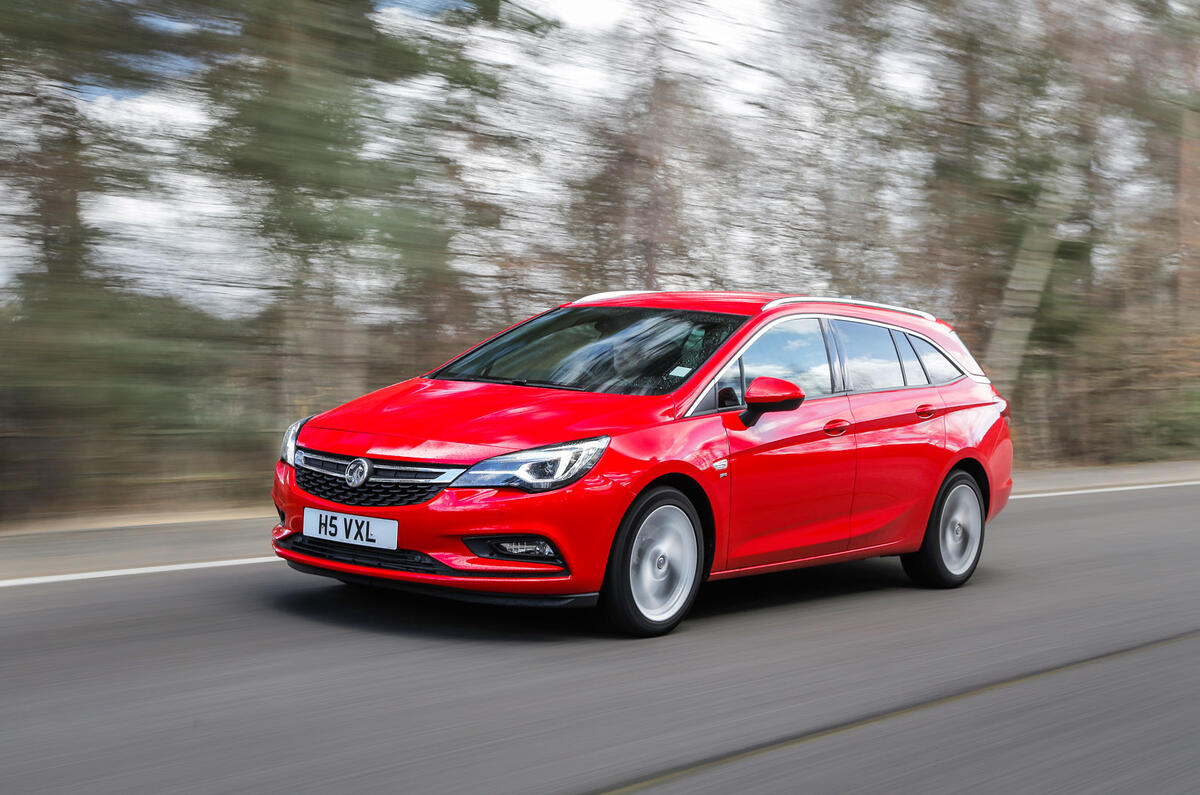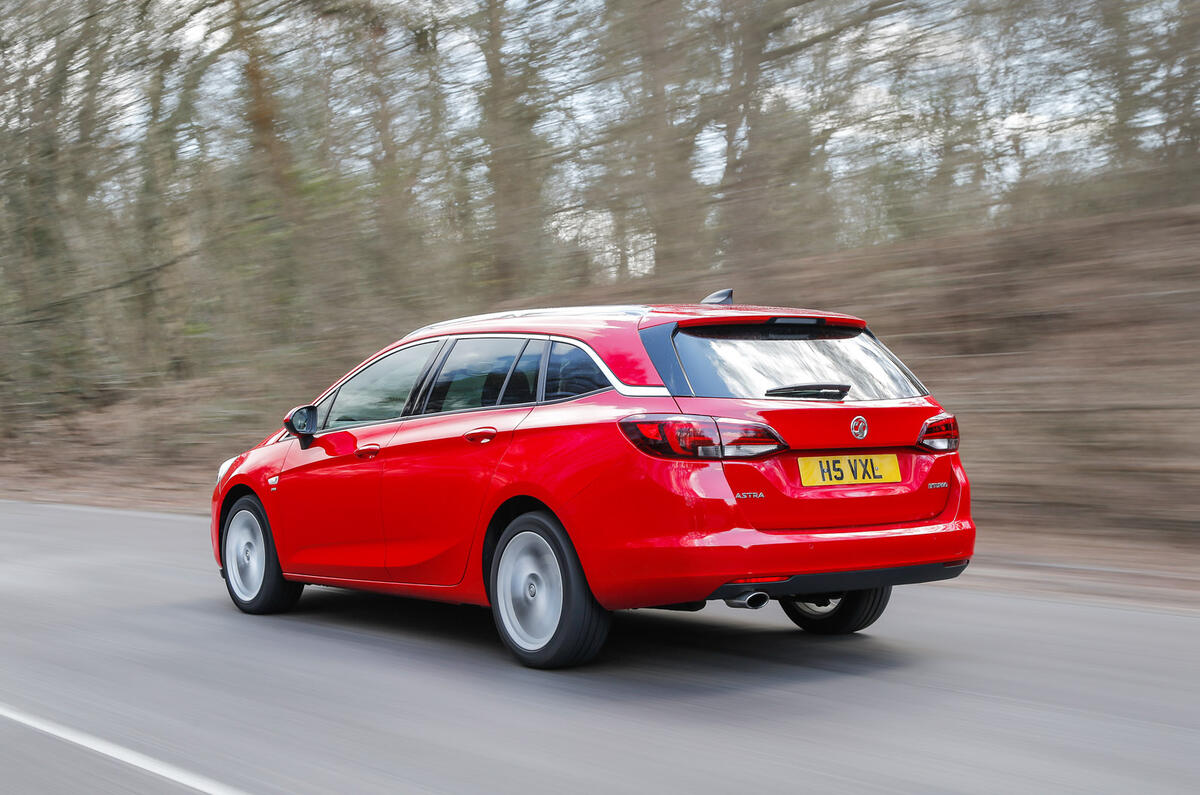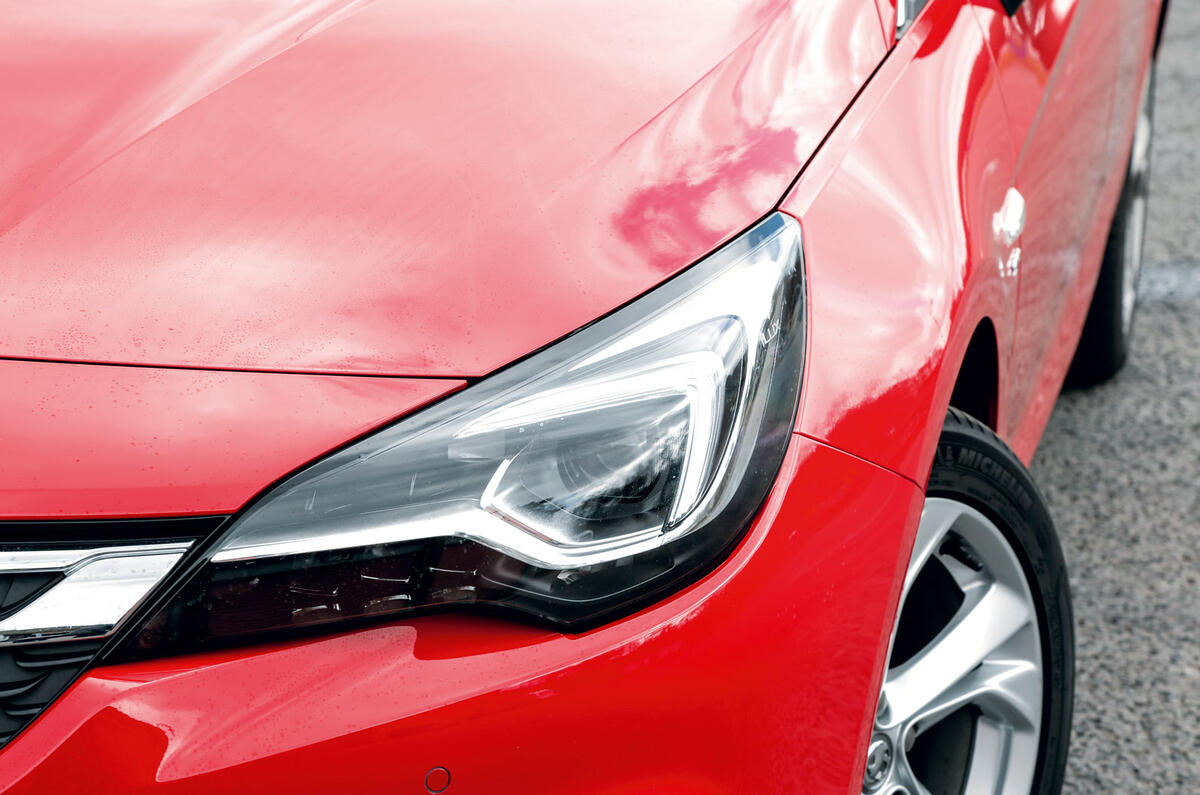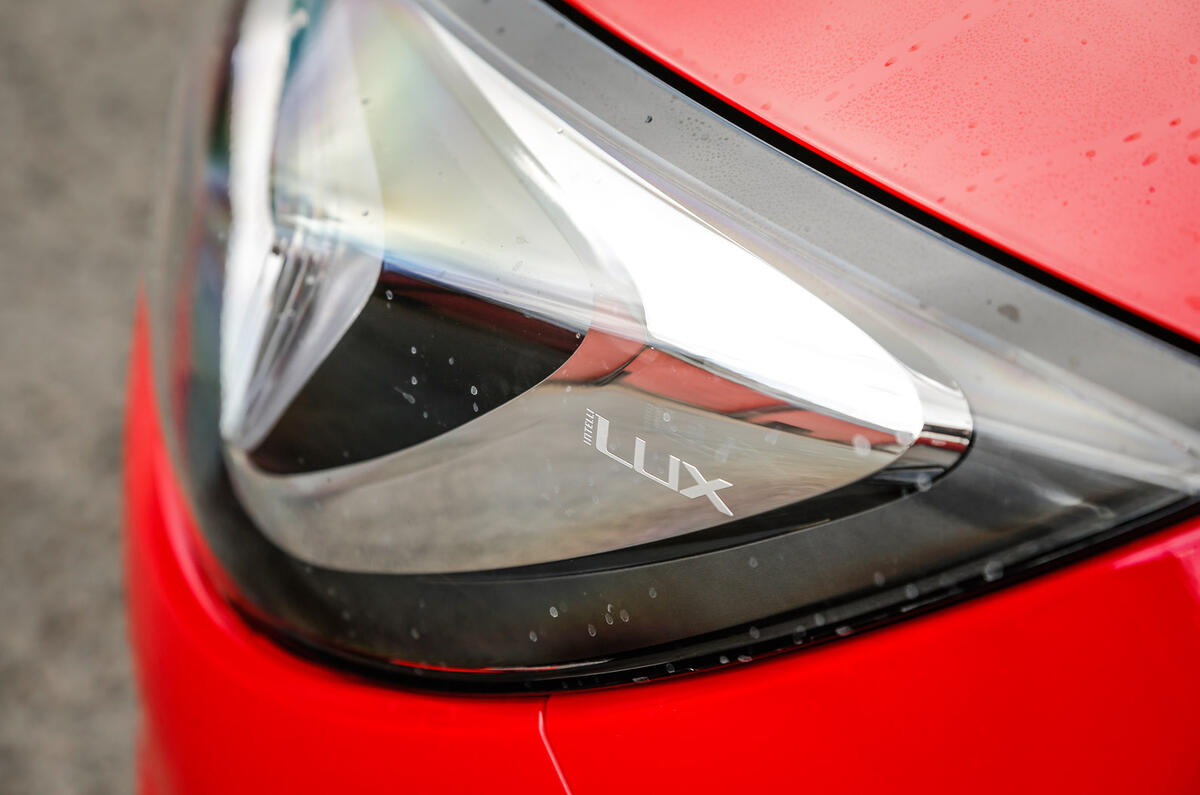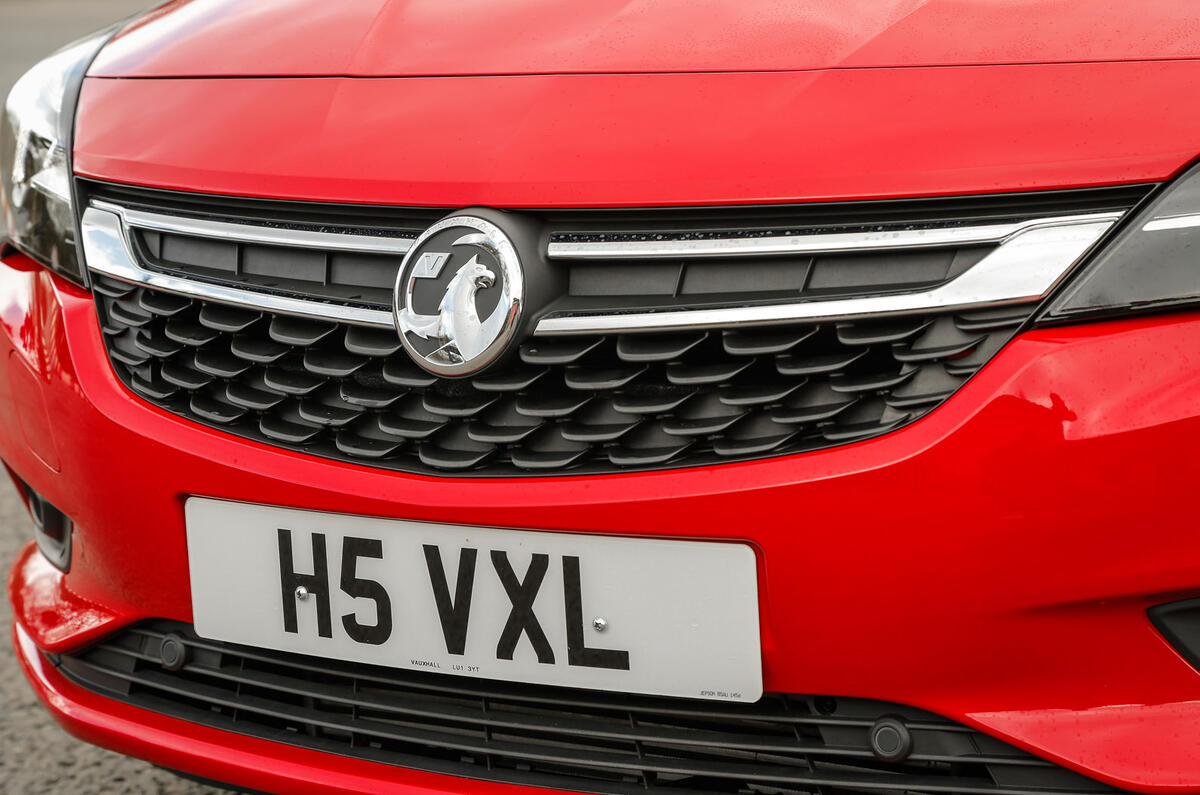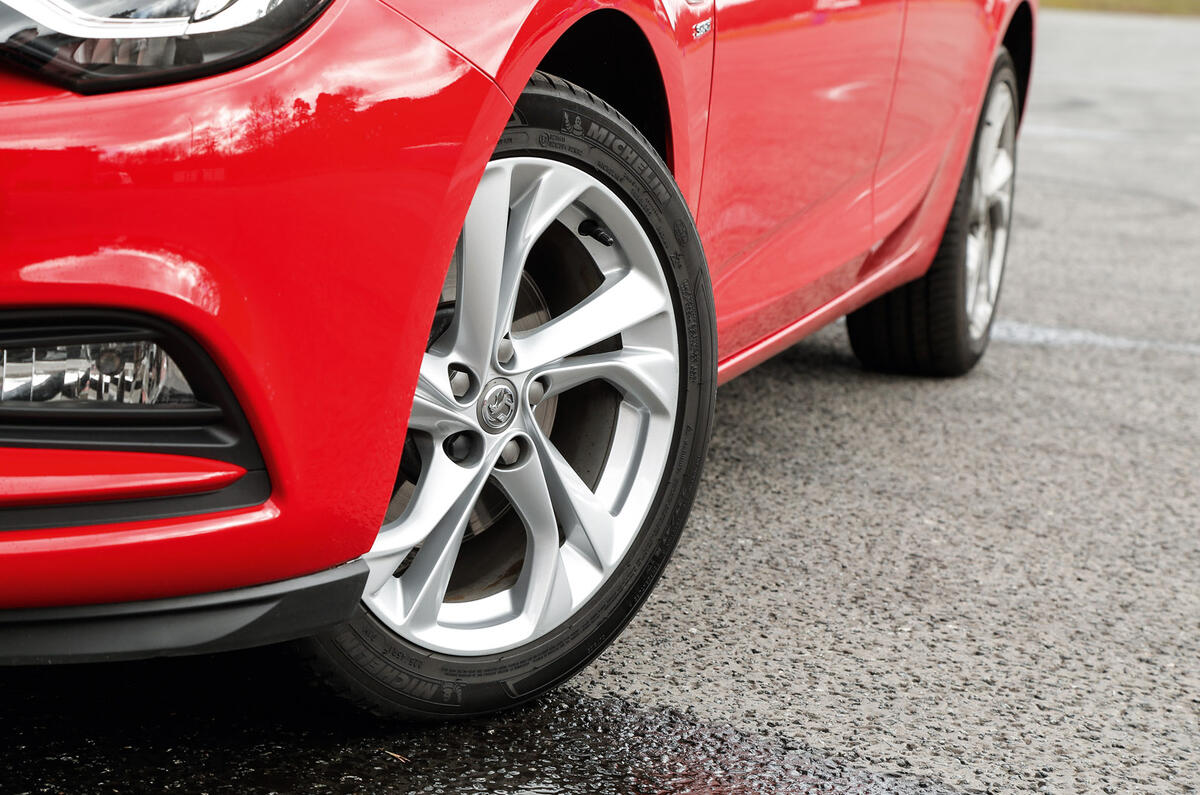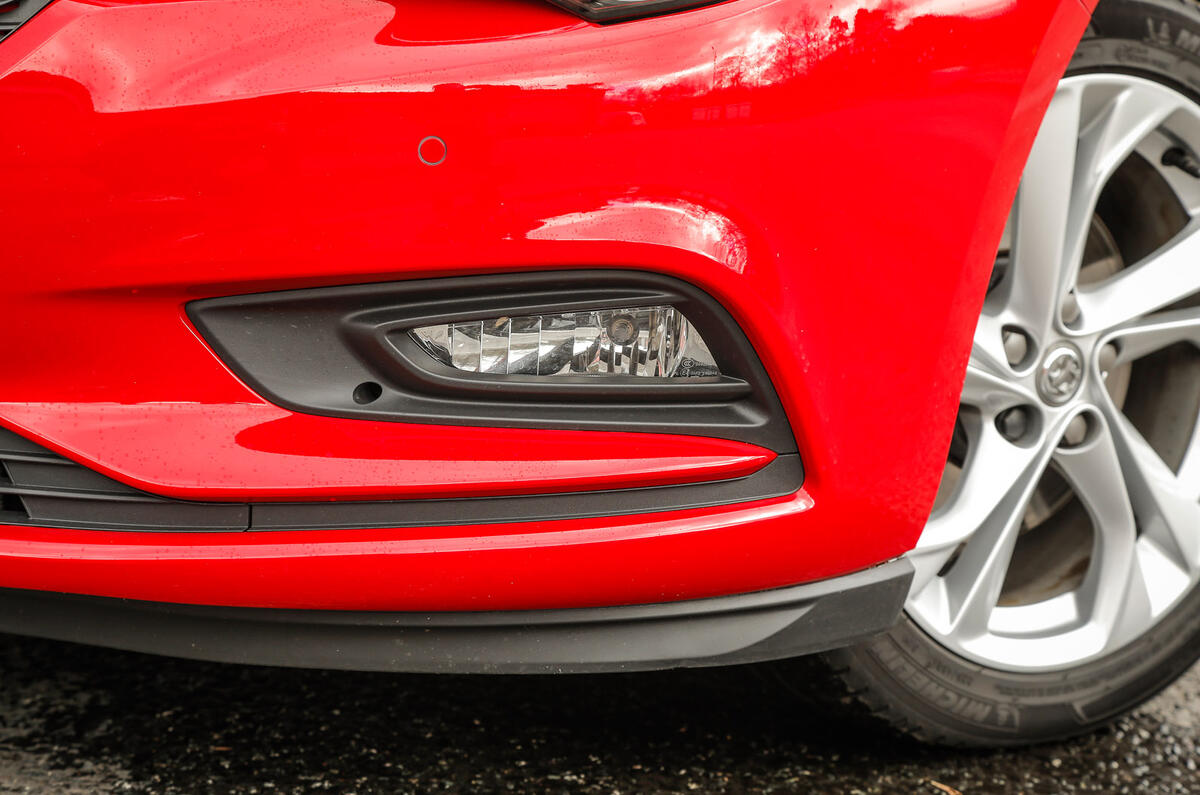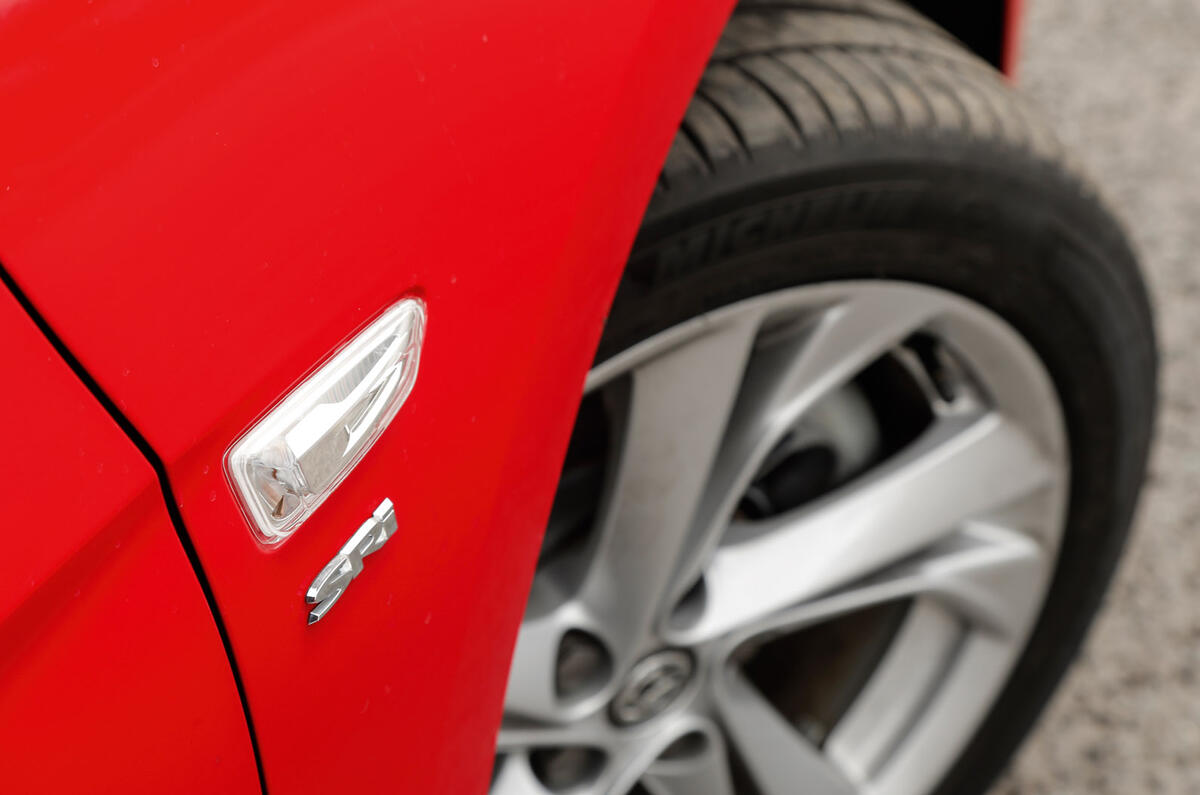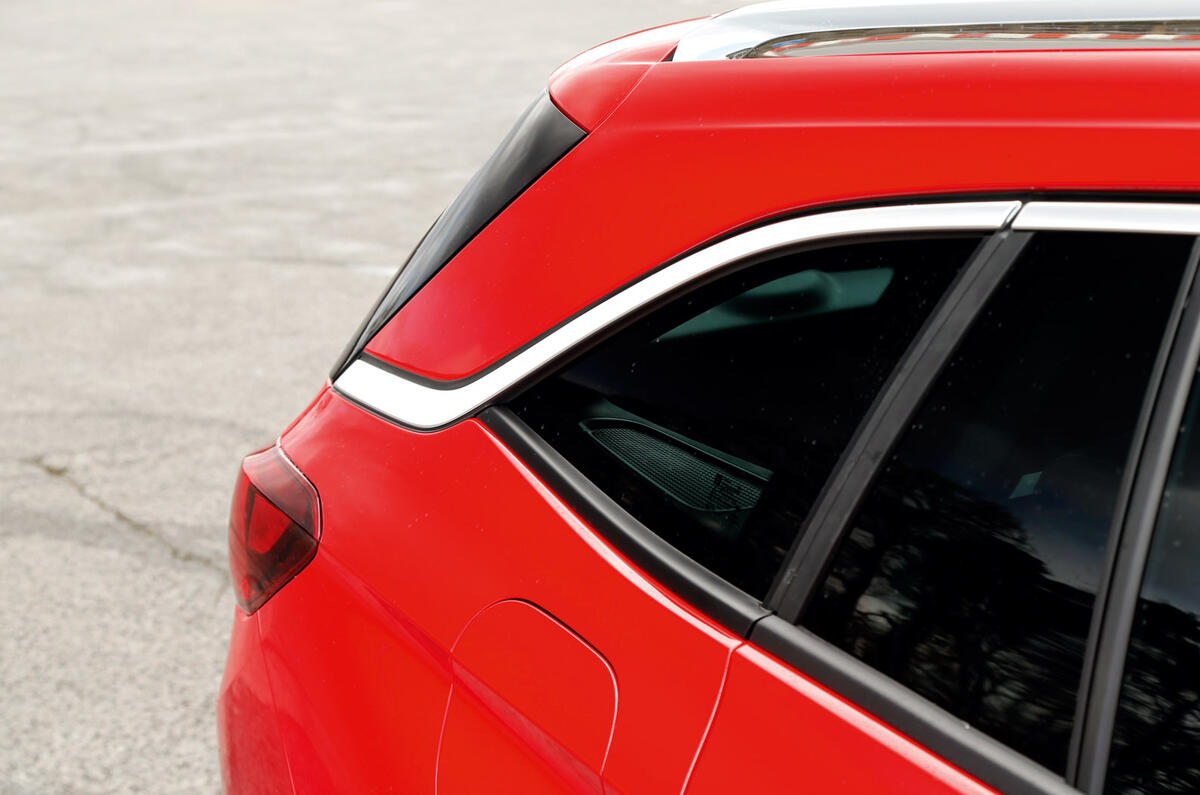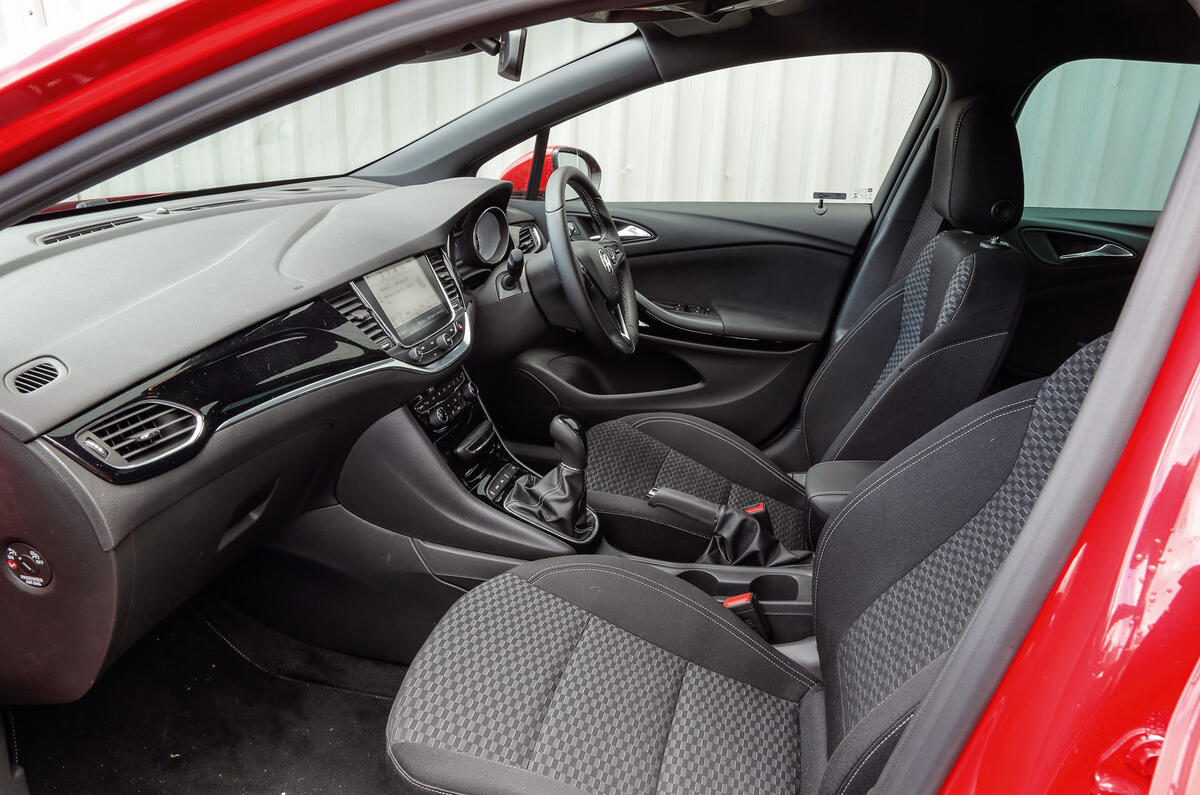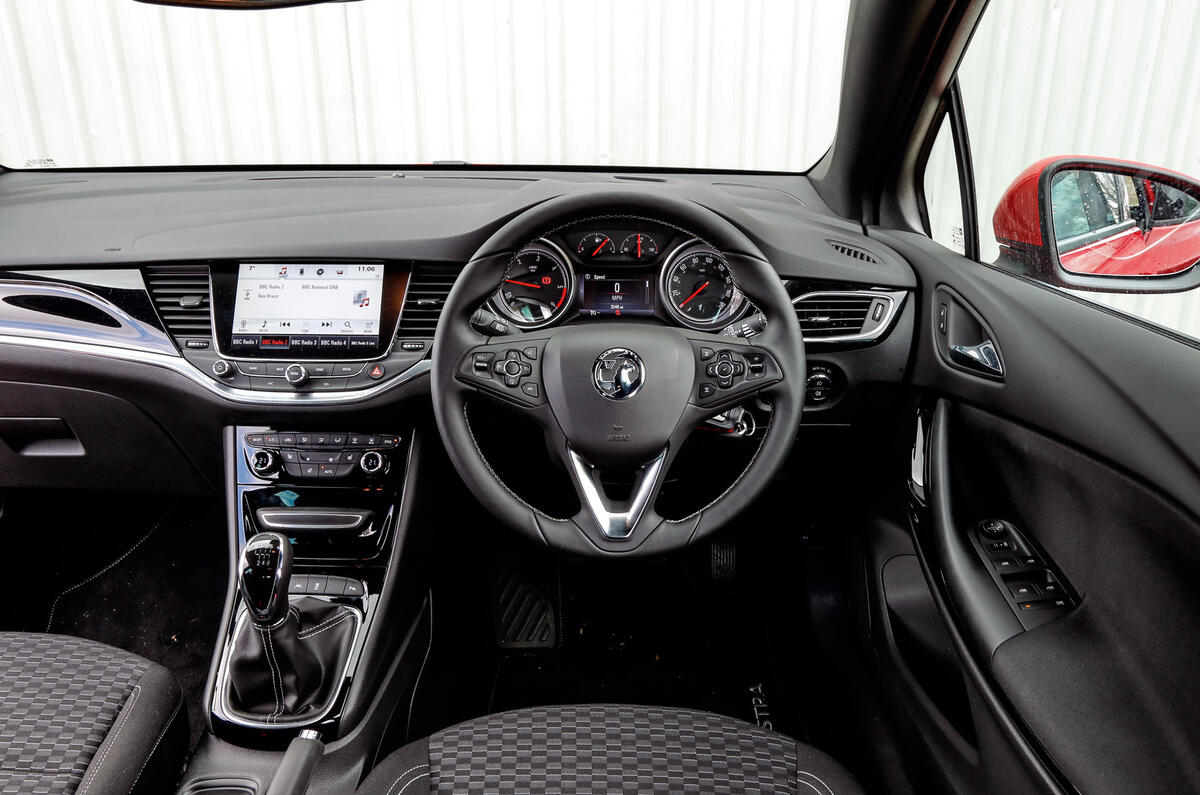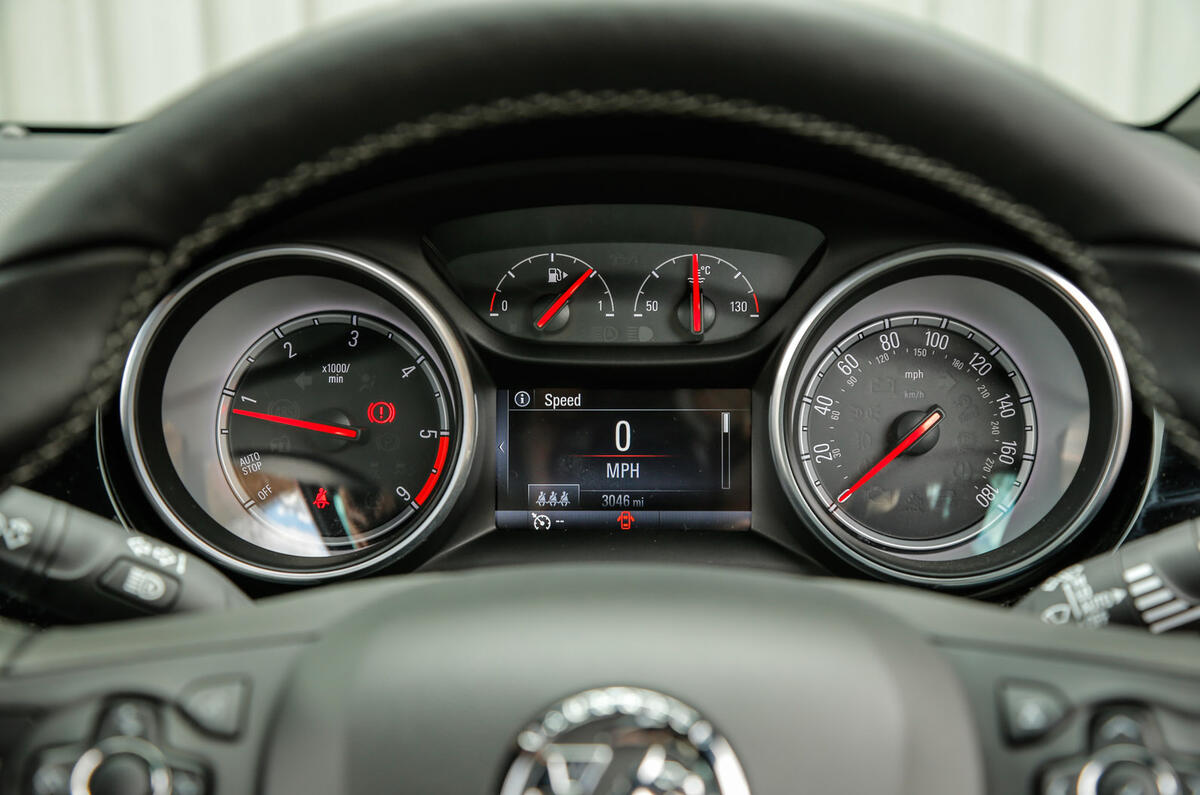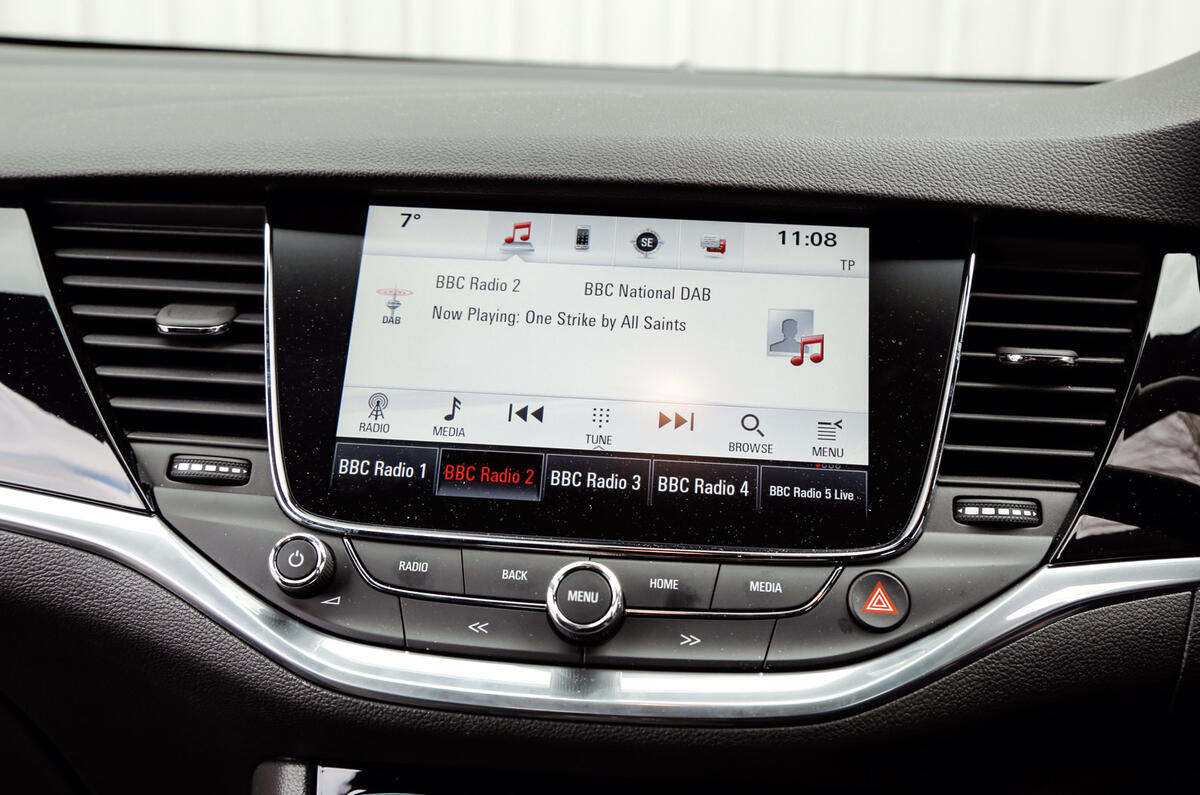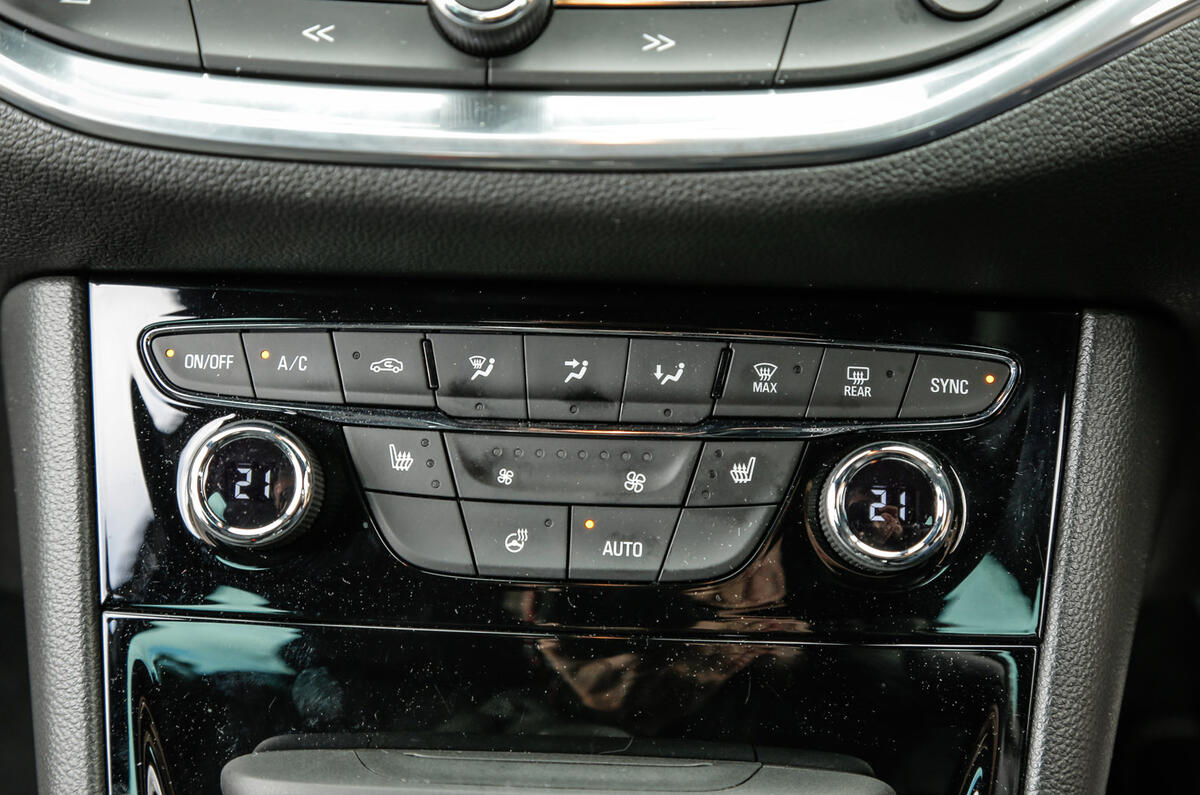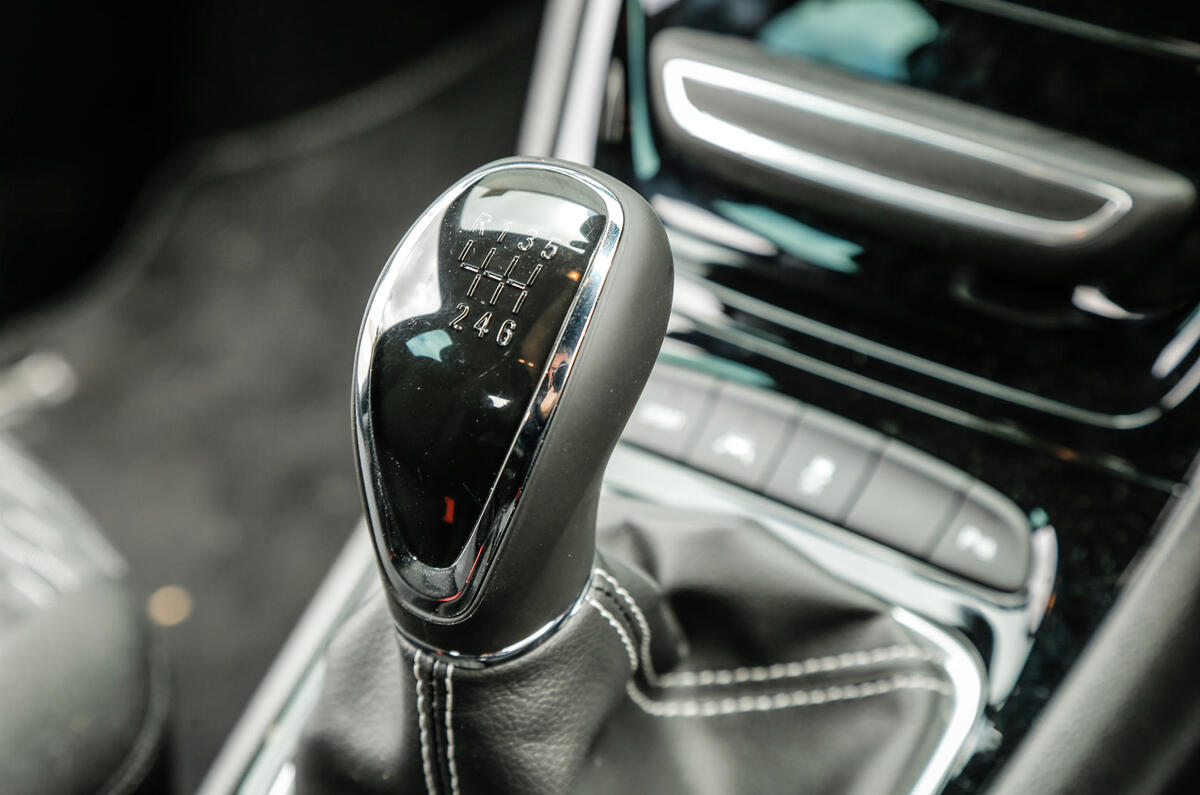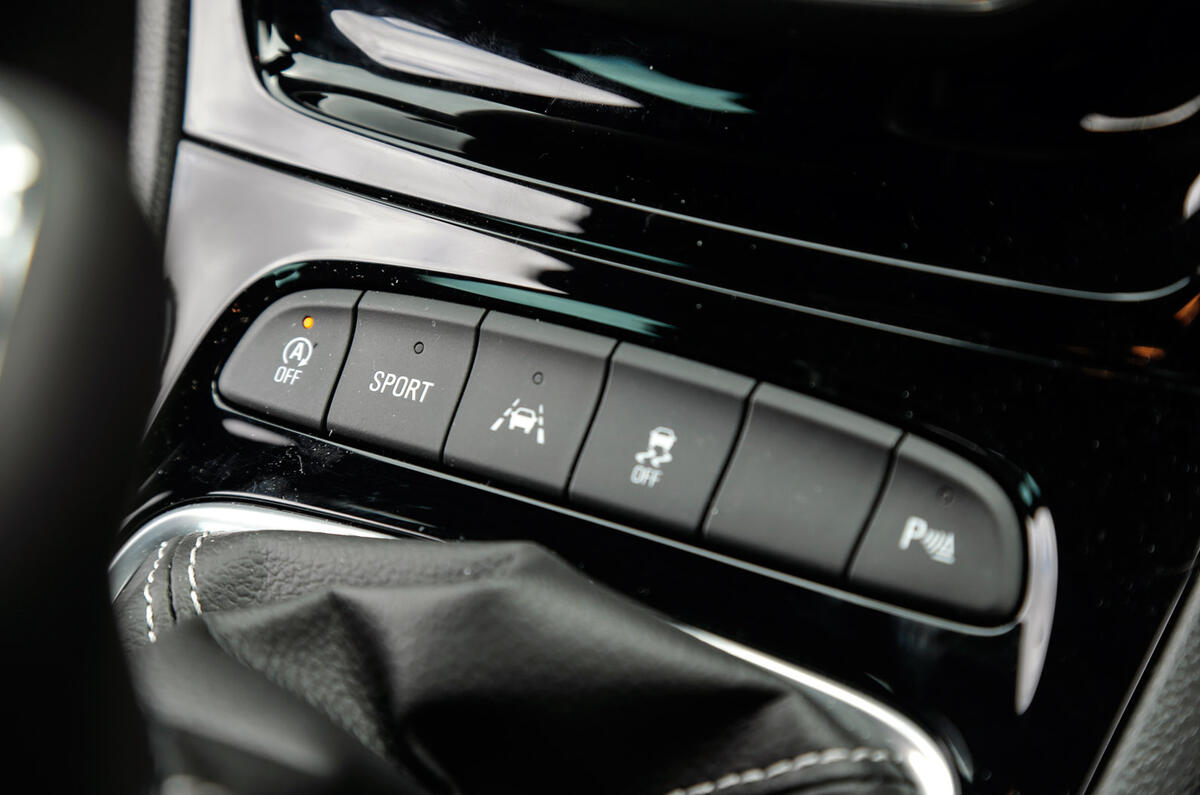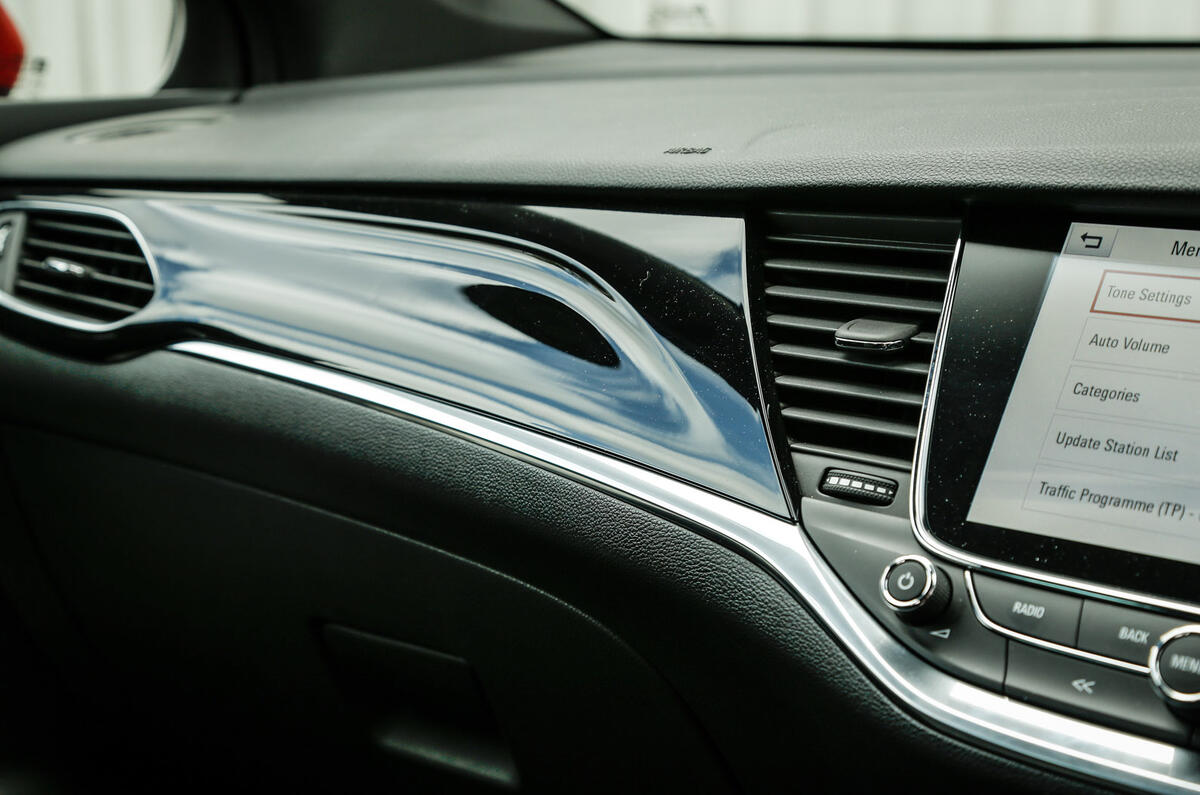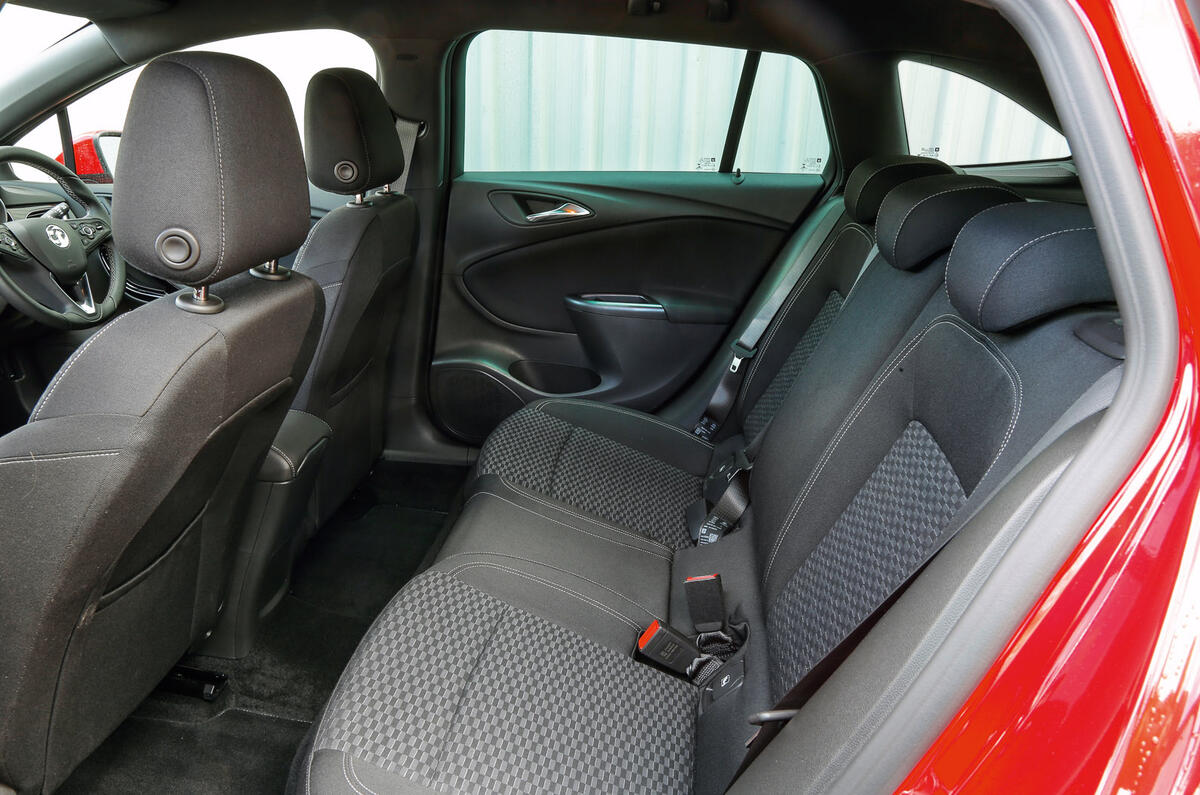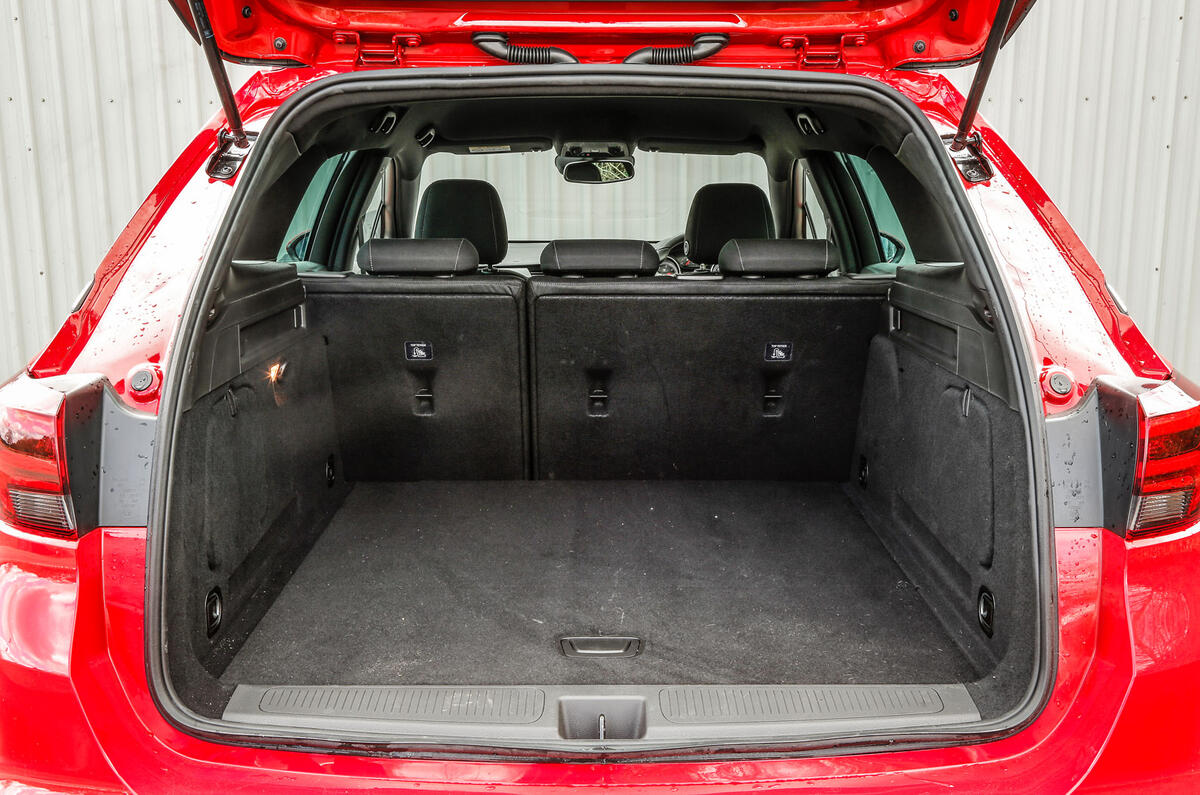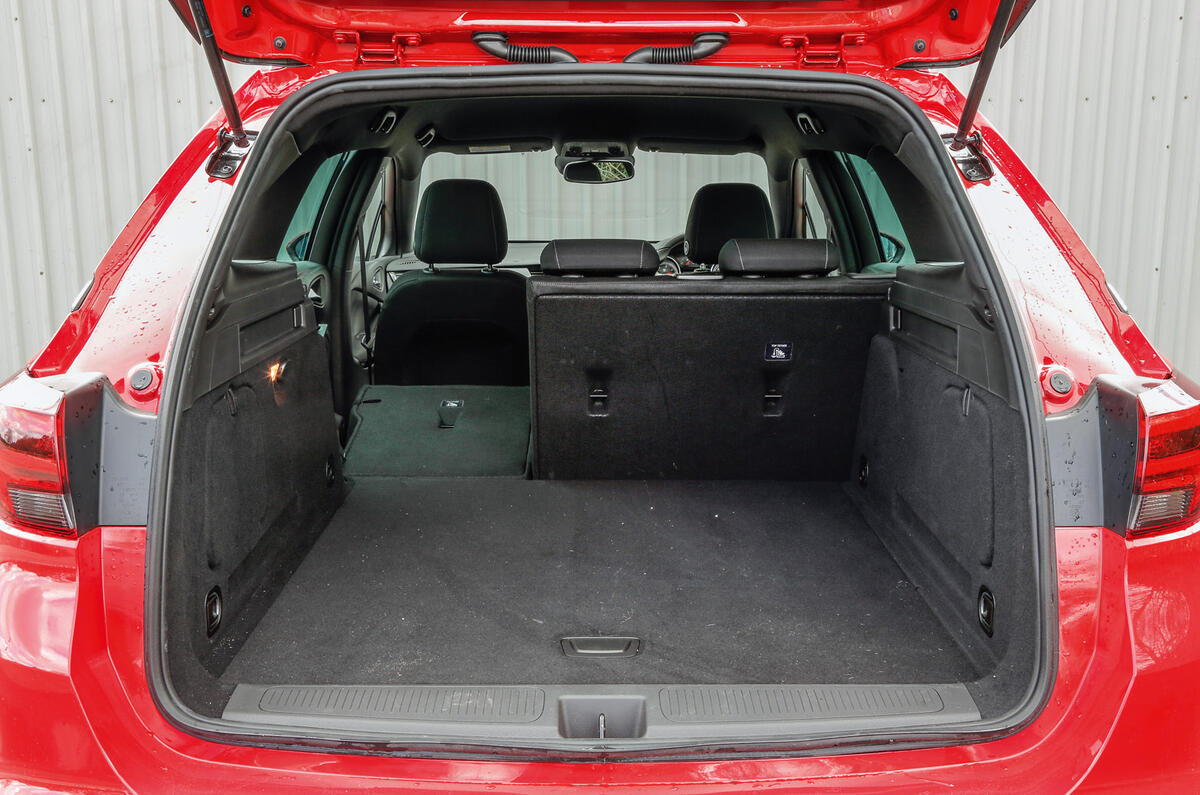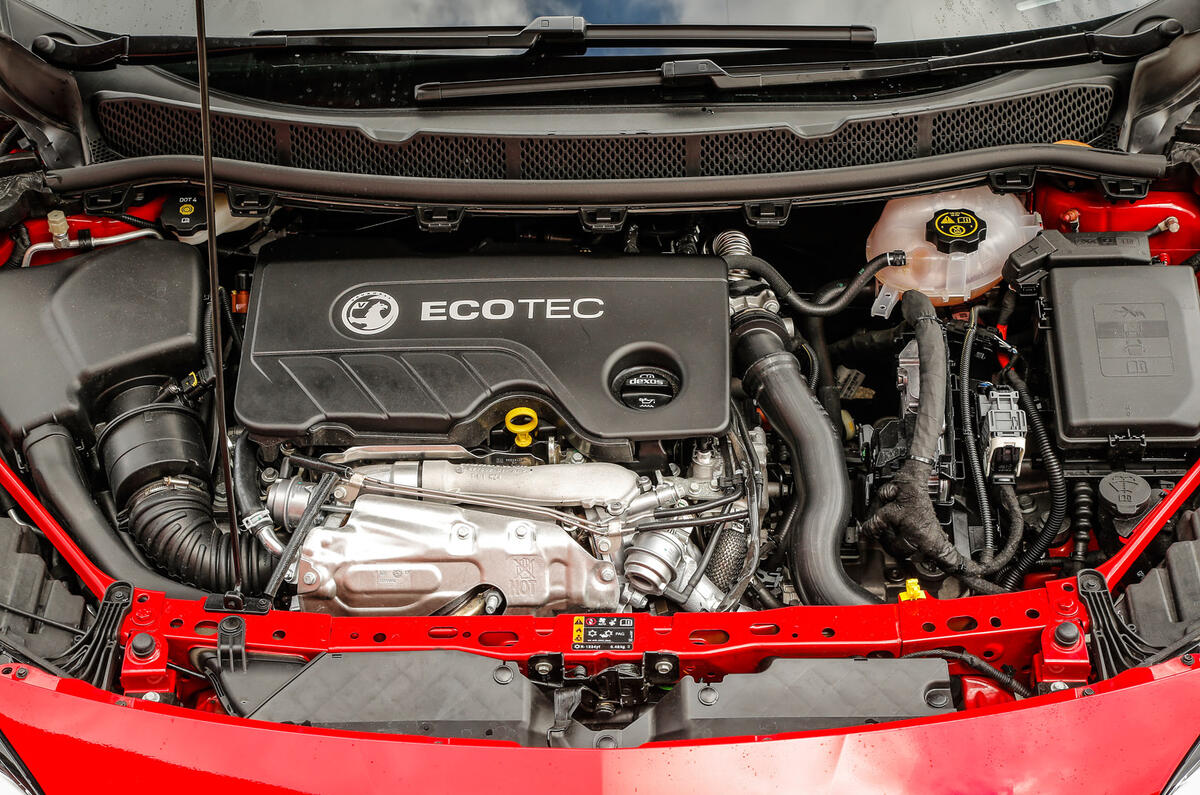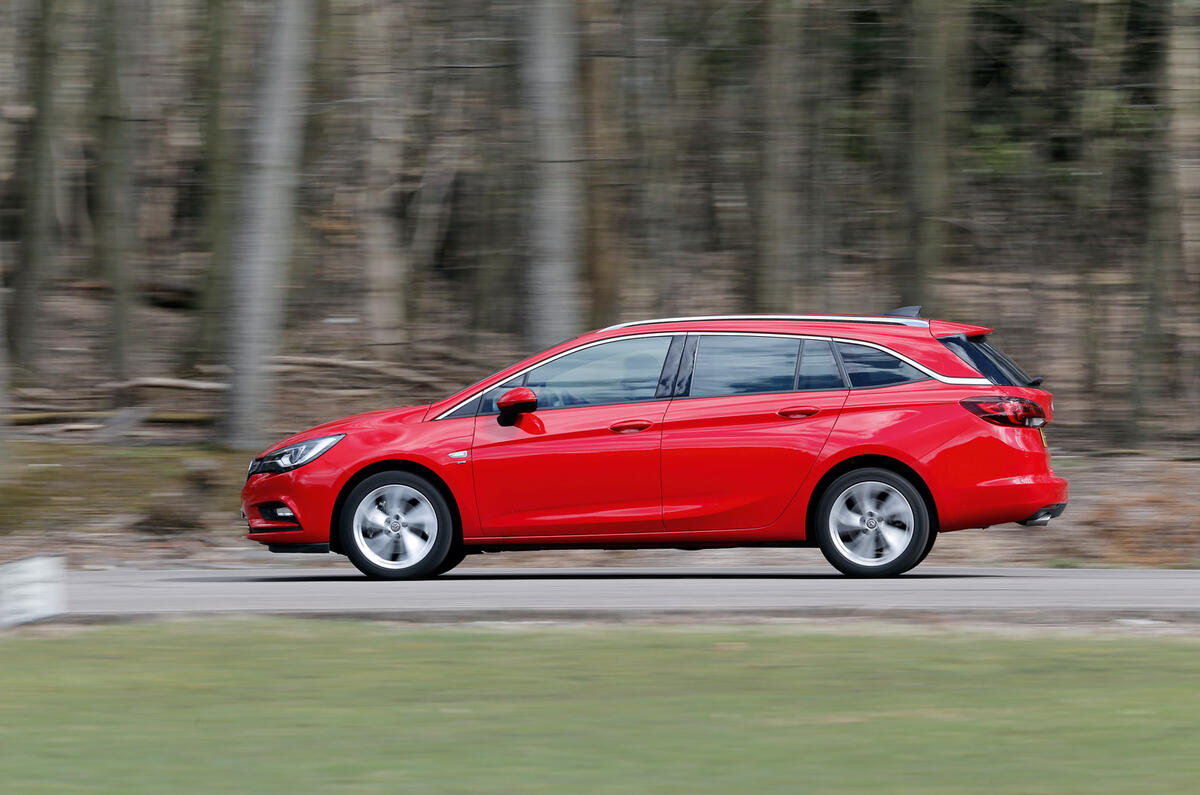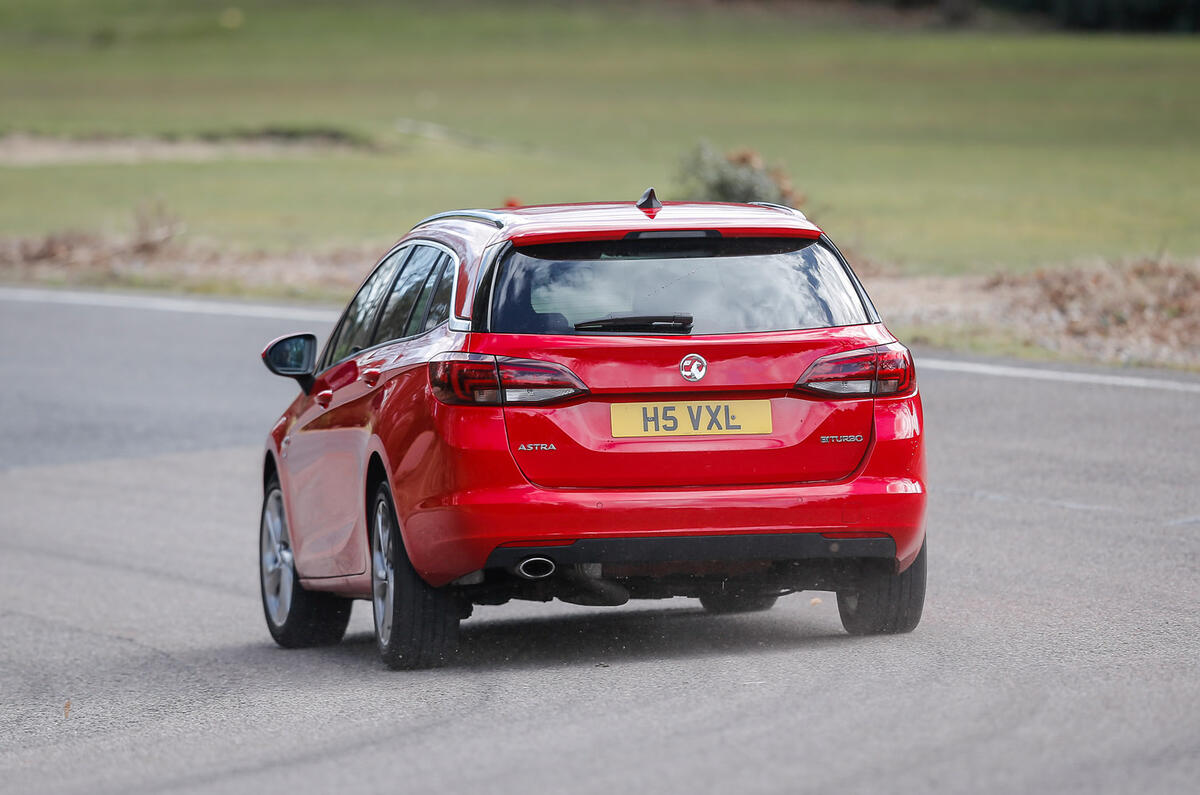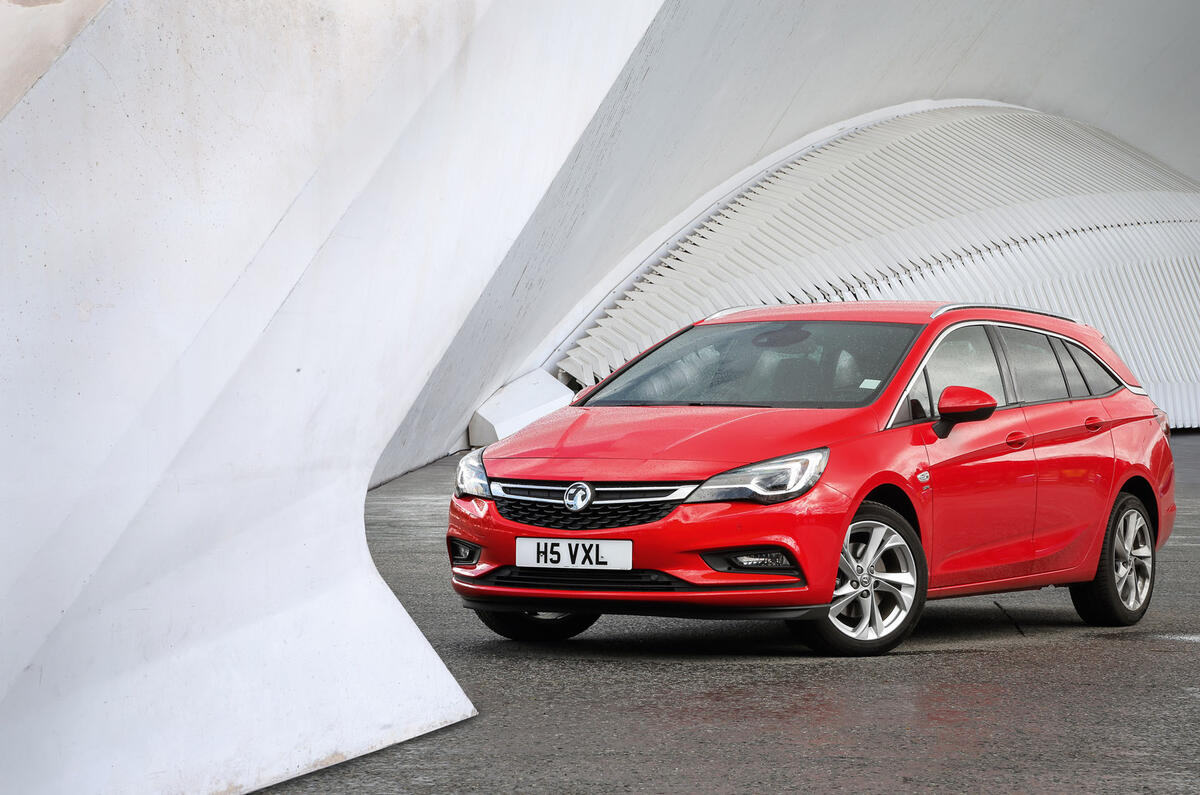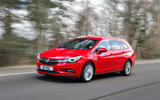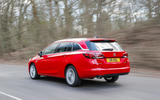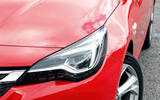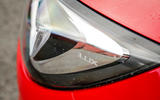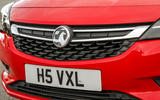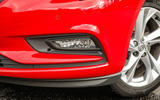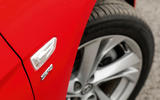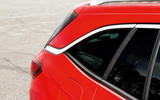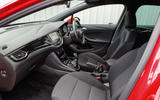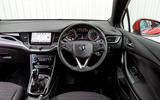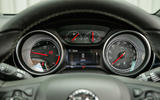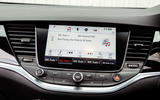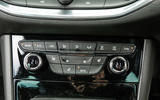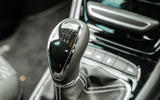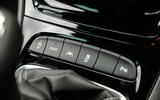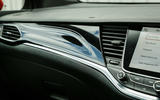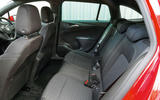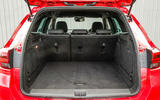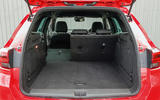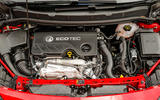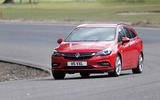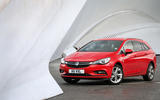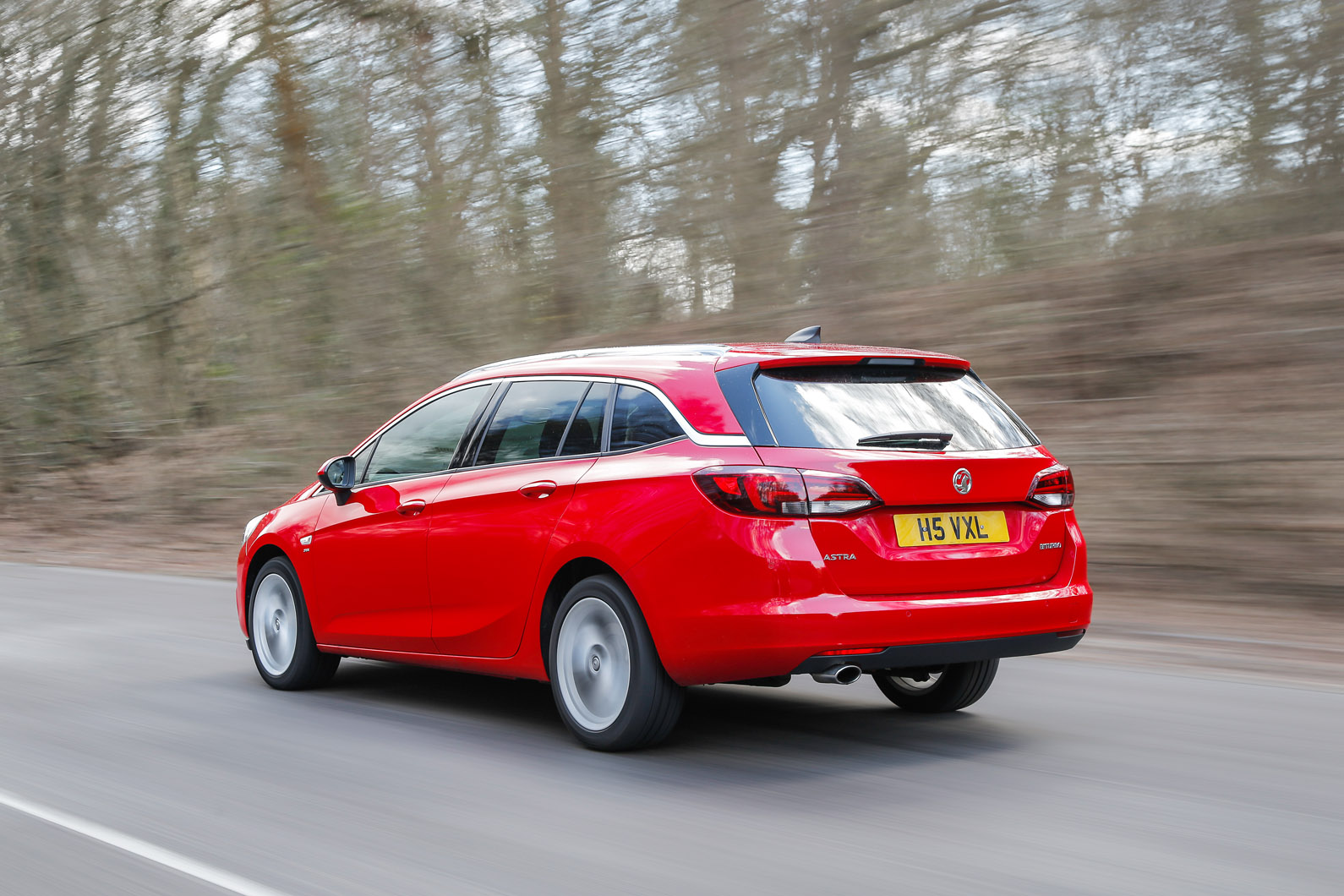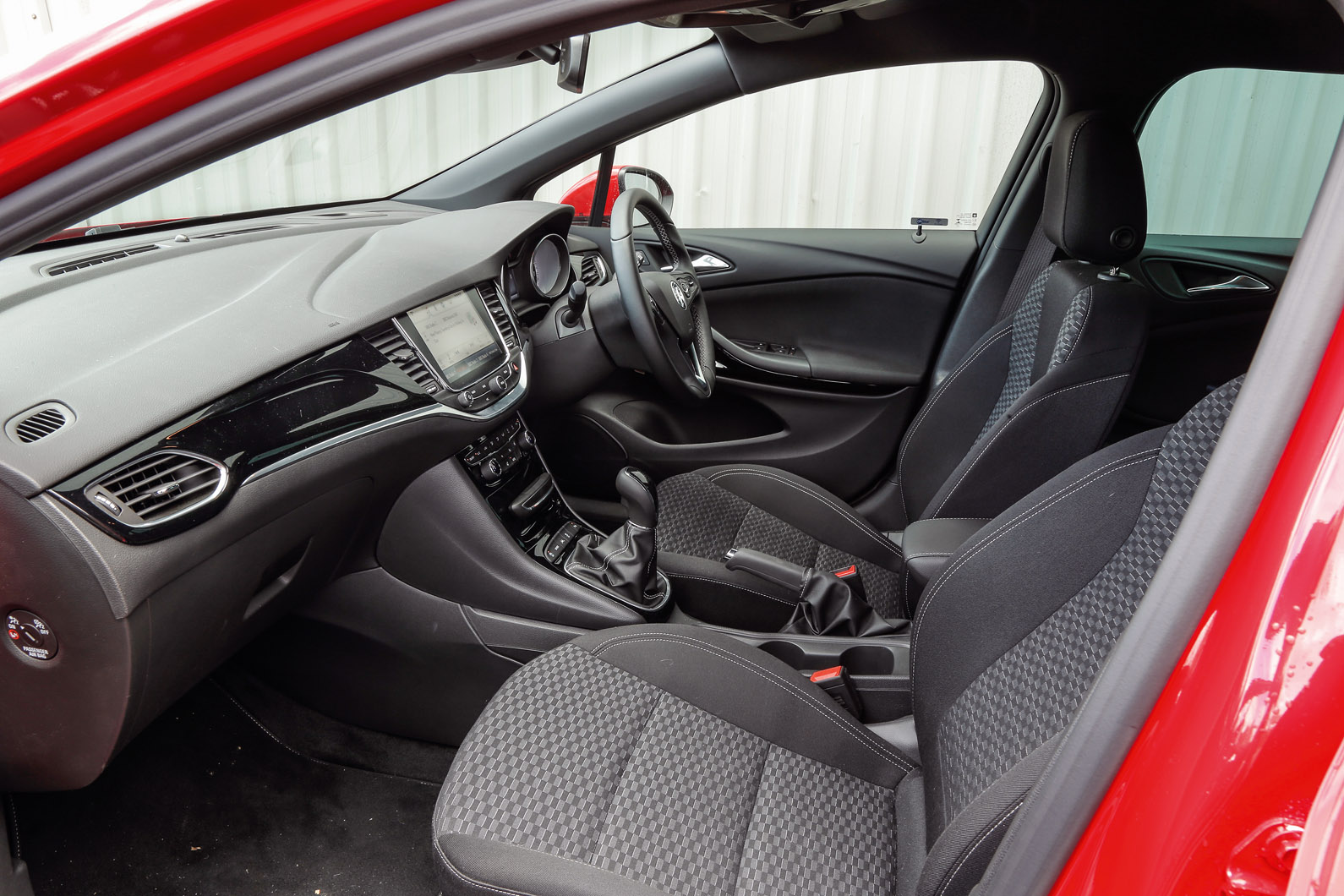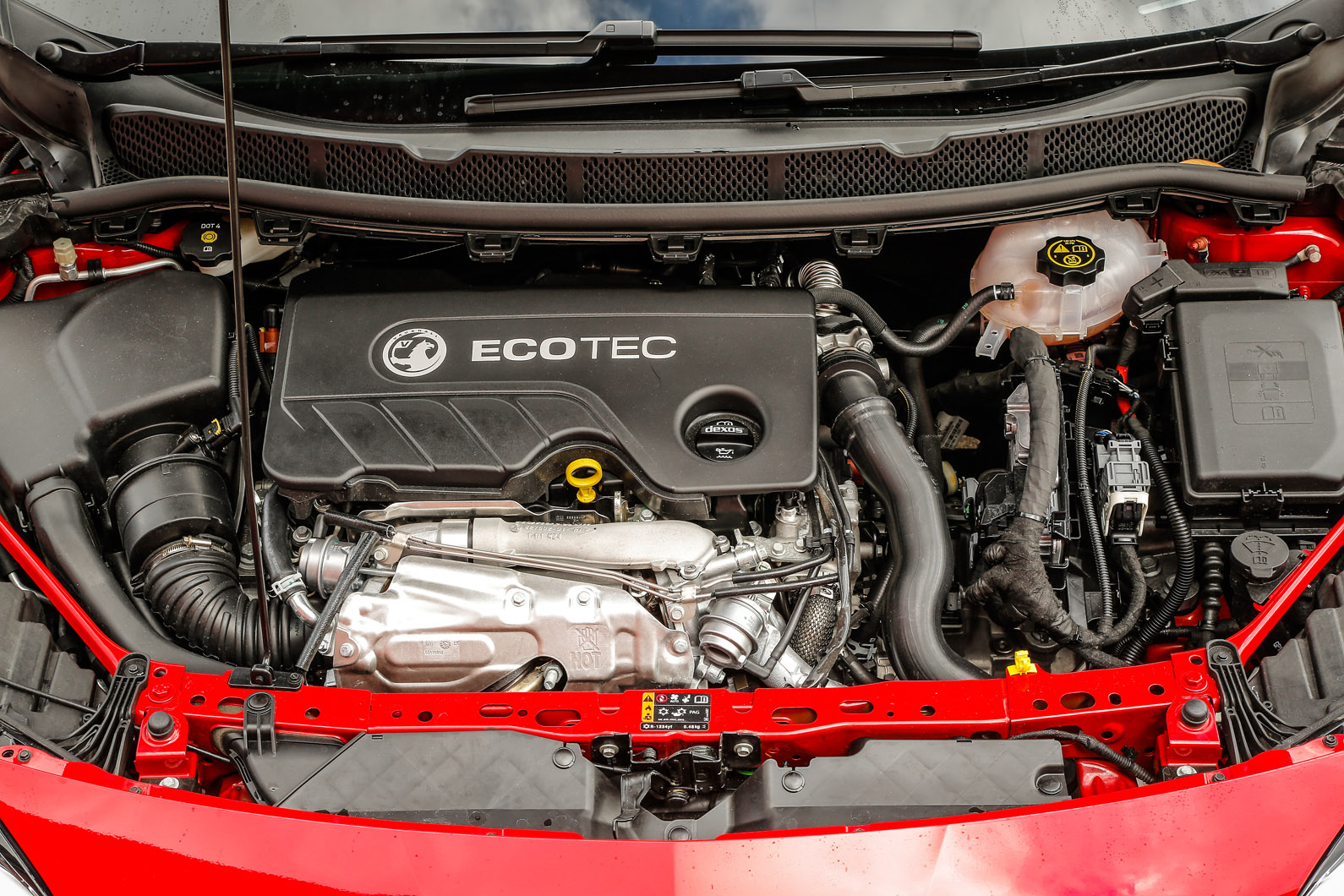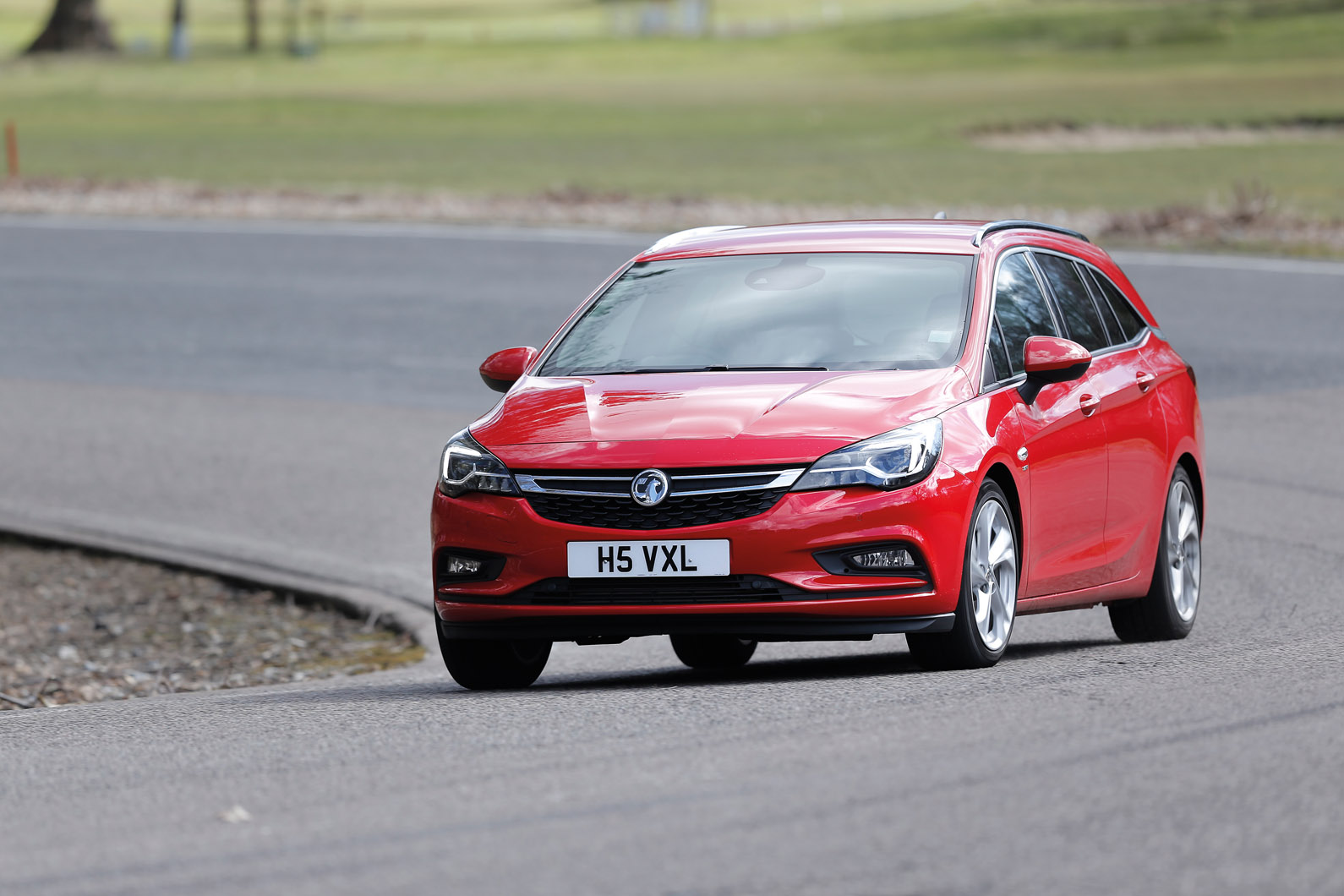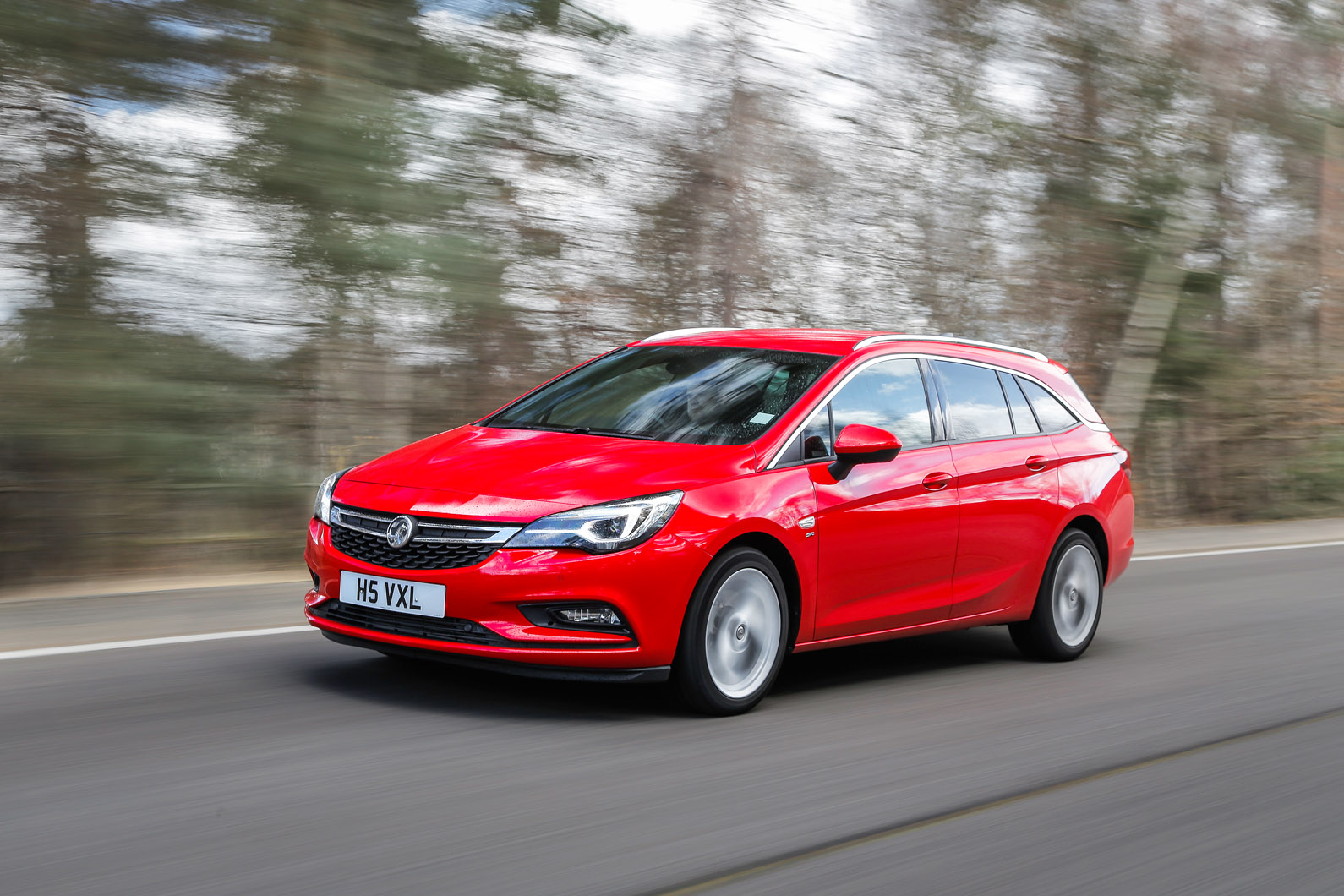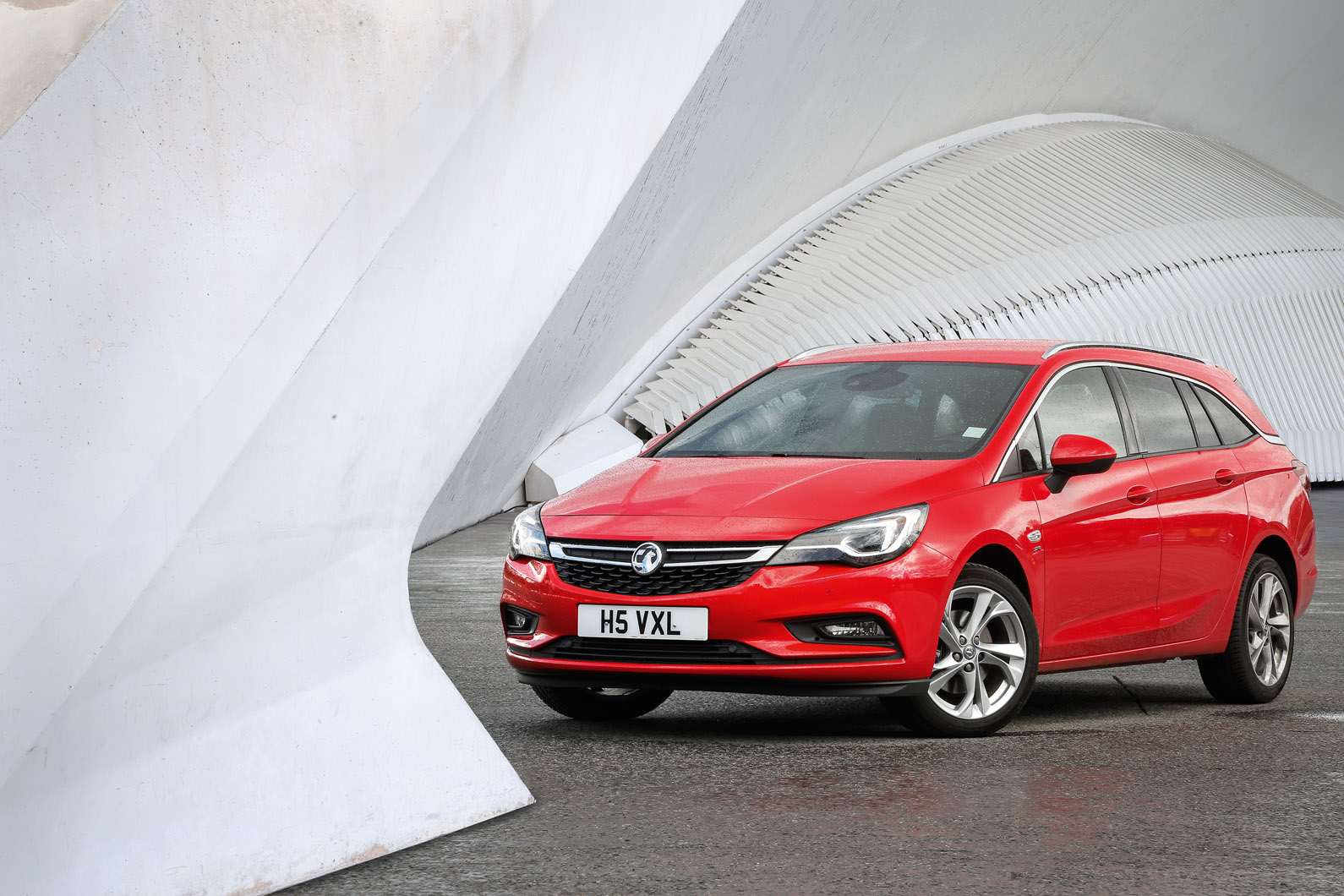For front seat occupants, the Sports Tourer delivers the standard Vauxhall Astra experience. Slightly less convenient and not nearly as well presented as a Volkswagen, the portion of the cabin forward of the B-pillars nevertheless lives up to our expectations of what a modern, mainstream family-sized model ought to be.
Only Vauxhall would boast of reducing switches and controls to the absolute minimum and yet still leave nearly 30 on the dashboard or think that providing nowhere to put your phone in the centre console is acceptable – but the much-improved IntelliLink system, decent styling and sturdy build quality see the Vauxhall Astra through.
Aft of the B-pillars, the impression of usability only improves. The standard hatch is roomy enough in the rear; in the wagon, thanks mostly to the extraordinary head room, it gets one step closer to properly capacious. Vauxhall claims 28mm more rear leg room over the Tourer’s predecessor, and while there isn’t a colossal amount of space for feet, most testers’ knees were well shy of the seat ahead.
Elbow and shoulder room are also respectable, but again it’s the head room afforded by the less than flattering roofline that impresses. Measuring a full metre from cushion to headlining, it’ll be a tall passenger indeed who feels short-changed by the space offered.
The boot – the primary reason for most people buying a wagon in the first place – is similarly pleasing. Apart from the weight of the tailgate (an automated one is optional), Vauxhall has hit all the small estate targets, the load space being square, flat and appropriately large.
There’s a full metre of length to exploit without lowering the seats and the opening is practically as wide as the boot itself. The 60/40 rear bench folds almost flat to offer up to 1630 litres, and it’s a process made all the more easy by a compartment cover that’s actually simple to remove thanks to having its catch located at the top.
There isn’t much cubbyhole space (opening the portholes to the either side reveals fuse boxes and exposed bodywork), but that hardly scuppers the Sports Tourer’s obvious practical appeal.
Vauxhall is proud of its latest IntelliLink system, and without doubt the 7.0in touchscreen was part of the reason the new Astra’s cabin felt like a product of this decade rather than the last.
Truth be told, there are some navigational issues (finding yourself pushing the physical ‘back’ button is a sign that not all is well on that front), but the occasional lapse in operating slickness next to rivals is largely overridden by the fact that it makes a DAB tuner, Bluetooth connectivity and even smartphone projection — the essentials, in other words — rightly standard on every model.
The Navi 900 version upgrades the screen to 8.0in and gives access to European maps. It’s an effective enough sat-nav, but it isn’t as beautifully presented as rival set-ups from the VW Group.
However, none of the competition currently offers the 4G wi-fi hotspot that comes with the OnStar service, which (for now) remains the kind of exclusive, brilliantly useful feature that Vauxhall dealers must never tire of showing off.
The simplicity and usability of this function is pleasantly high, trumping a number of high-priced optional systems delivered by premium manufacturers.
On the equipment front, there are five trim levels to choose from - Design, Tech Line Nav, SRi, SRi Nav, Elite and Elite Nav. Entry-level models get 16in alloy wheels, auto lights, electrically adjustable and heated wing mirrors, black roof rails, cruise control, hill start assist and LED day-running lights on the outside as standard. Inside the Astra Sports Tourer gets air conditioning, steering wheel controls and Vauxhall's IntelliLink infotainment system complete with a 7.0in touchscreen display, Bluetooth, DAB radio, smartphone integration and USB connectivity.
Upgrade to Tech Line Nav and the Sports Tourer gains a leather covered steering wheel, adjustable front arm rest and an infotainment system complete with an 8.0 touchscreen display and sat nav, while those opting for the Energy model gets all the equipment of the Design trim plus a heated steering wheel and front seats and 17in alloy wheels.


